People
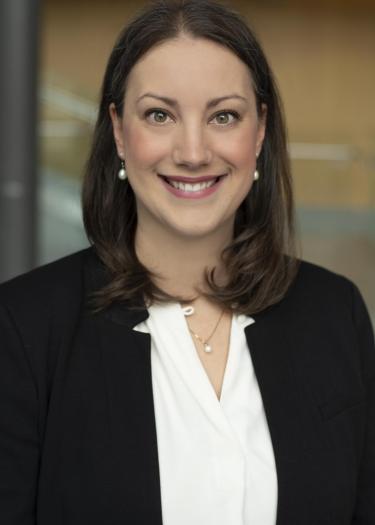
Laurel E. Hind, PhD
Assistant Professor of Chemical and Biological Engineering, University of Colorado Boulder
B.S. Chemical and Biological Engineering 2009, University of Wisconsin-Madison
Ph.D. Bioengineering 2015, University of Pennsylvania, Bioengineering
Postdoctoral Fellow Medical Microbiology and Immunology 2015-2019, University of Wisconsin-Madison
Email: laurel.hind@colorado.edu
CV
Google Scholar
Dr. Hind joined CU Boulder’s department of Chemical and Biological Engineering as an Assistant Professor in January of 2020. She joined the faculty at CU Boulder after completing her postdoctoral research in Dr. Anna Huttenlocher’s laboratory in Medical Microbiology and Immunology at the University of Wisconsin-Madison. As a postdoctoral fellow, Dr. Hind studied the role of multicellular interactions in driving the innate immune response to infection using biomimetic models of the infectious microenvironment. She received her Ph.D. in Bioengineering from the University of Pennsylvania in 2015 where she worked with Dr. Daniel A. Hammer and was an NSF Graduate Research Fellowship recipient. As a graduate student, Dr. Hind studied the role of the tissue microenvironment, including substrate stiffness and ligand density, on macrophage migration and force generation. She received her B.S. in Chemical and Biological Engineering from the University of Wisconsin-Madison in 2009, where she worked for Dr. Sean Palecek and was a Merck Undergraduate Research Scholar.
Graduate Students
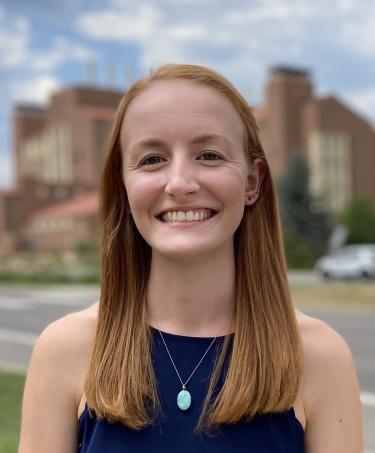
Hannah Weppner
B.S. Chemical Engineering, 2020, Rochester Institute of Technology
Email: hannah.weppner@colorado.edu
Hannah is a graduate student in the Hind Lab who is pursuing her PhD in Chemical Engineering. Her project aims to investigate the migration of myeloid-derived suppressor cells (MDSCs) using microfluidic devices. In particular, she is interested in identifying signals that drive their migration and observing their complex interactions with both pathogens and other innate immune cells, all with the goal of better understanding these cells in the context of human health. During her time at RIT, Hannah completed co-ops at Crane Currency and Rich Products. She also conducted forensic nanoparticle research during an REU at the South Dakota School of Mines and participated in applied mathematics research with the Barlow-Weinstein group at RIT. Outside of lab, Hannah likes to read, hike, run, and camp.
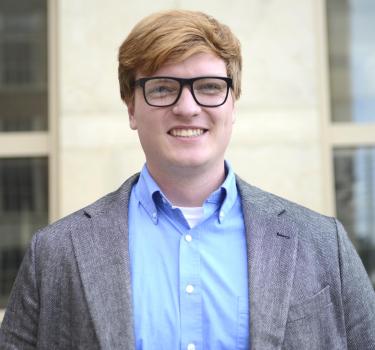
Eric Ginter
B.BmE Biomedical Engineering 2021, University of Minnesota
Email: eric.ginter@colorado.edu
Eric is a graduate student working towards his PhD in Biological Engineering. His project is focused on learning how different parts of the body mediate the inflammatory and immune response differently. He's looking at the interaction of immune cells with the endothelium sourced from key areas such as the brain, lungs, and dermis. While at the University of Minnnesota, Eric worked in the Herzberg lab in the School of Dentistry. His time there was spent improving delivery of genetic material that decreased inflammation in periodontitis. When not in lab, Eric enjoys exploring Colorado through camping, hiking, and fishing.
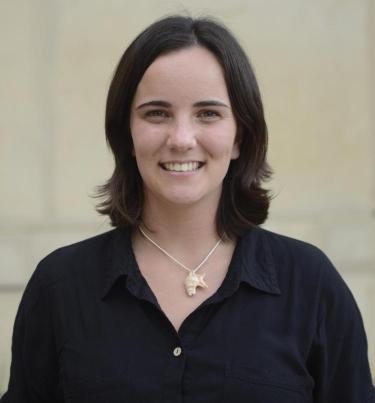
Aitana Ignes-Romeu
BS Biochemistry, Universitat Autònoma de Barcelona
Email: aitana.ignes-romeu@colorado.edu
Aitana is a graduate student in the Hind Lab who is pursuing her Ph.D. in Biological Engineering. Her project involves investigating the interaction between neutrophils and macrophages, utilizing innovative microfluidic devices. In particular, she is interested in uncovering the intricate signals and migration patterns exhibited by neutrophils when they engage with various phenotypes of macrophages. These studies are conducted within different pathological contexts, with the ultimate goal of deepening the comprehension of these innate immune cells in the realm of human health. Moreover, she aspires to identify potential targets that could be instrumental in improving pathological conditions. During her high school years, she conducted a project focused on the impact of glucotoxicity on adipocytes in the context of diabetes, while collaborating with the Amino Acid Transporters and Disease research group at the IRB. After that, during her biochemistry undergraduate years, she completed an internship at Dr. Yang's lab within the Computational and Synthetic Biology research group at CRAG. Her projects there were centered around elucidating the interaction between the human p53 proteasome and diverse human k-RAS mutations, as well as enhancing protein synthesis through the utilization of Chlamydomonas reinhardtii. Outside of the laboratory, she enjoys outdoor sports such as skiing, running, hiking, and swimming. What she loves the most, though, is a well-made cup of coffee after any of those activities.

Justin Owens
BS, Chemical Engineering, The University of Texas at Austin
Email: Justin.Owens@colorado.edu
Justin is a graduate student in the Hind Lab working towards his PhD in Biological Engineering. For his project, he is investigating how the neutrophil response changes in response to different signaling molecules. Specifically, he is looking at how signaling molecules affect neutrophil migration, extravasation, and anti-bacterial defense mechanisms. As an undergraduate at the University of Texas at Austin, Justin worked in the Maynard Lab in the Chemical Engineering Department where he worked on engineering antibodies to treat glioblastoma and cytomegalovirus. He enjoys hiking, visiting national parks, and building Legos.
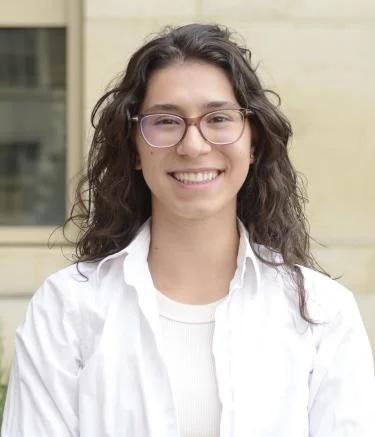
Yoanna Ivanova
B.E., Biomedical Engineering, Vanderbilt University
M.S., Bioengineering, University of Illinois Urbana-Champaign
Email: Yoanna.Ivanova@colorado.edu
Yoanna is a graduate student in the Hind lab pursuing her PhD in Biological Engineering. Her project aims to create a microfluidic model of the Blood Brain Barrier to be used for drug transport studies. Specifically, she is interested in studying the transport of HIV antiretrovirals in a healthy environment and a simulated infectious environment to better understand how our brain and its immune system respond to HIV. As an undergraduate at Vanderbilt University, Yoanna studied lipid formation in irradiated fibroblasts as related to triple negative breast cancer recurrence in the Marjan Rafat Lab and was mentored by Kevin Corn. She later received her M.S. from the University of Illinois in the Brendan Harley Lab while developing a model to study the effect of radiation on the Glioblastoma Perivascular Niche. Outside of the lab, Yoanna loves to ski, listen to autobiographies, and re-reorganize the latest part of her apartment. She also enjoys finding new restaurants and hikes around Colorado.
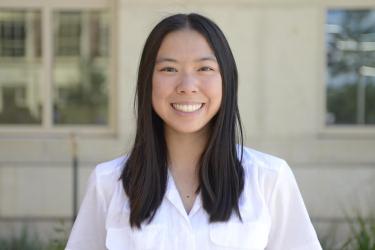
Lea Pearl Hibbard
BS, Chemical and Biological Engineering, University of Colorado Boulder
Email: Lea.Hibbard@colorado.edu
Lea is a graduate student in the Hind lab pursuing her Ph.D in Biological Engineering. Her project aims to investigate cellular and environmental factors influencing the formation of blood vessel-like structures formed by melanoma cells. Her undergraduate research at CU Boulder was in the Anseth lab developing viscoelastic hydrogels for applications in 3D bioprinting and organoid culture. In her free time, Lea enjoys climbing, skiing, and birdwatching.
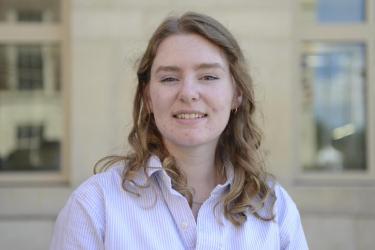
Meg Radke
BE, Biomedical Engineering, Tufts University
Email: Meg.Radke@colorado.edu
Meg is a graduate student in the Hind Lab working towards her PhD in biological engineering. Her research focuses on understanding how different mechanical properties of tissue impact neutrophil behavior. Specifically, she is developing materials with varying viscoelasticity and stiffnesses to investigate how these alter neutrophil migration. At an undergrad at Tufts University, Meg worked in David Kaplan’s Lab developing silk hydrogels for tissue culture. When not in lab, she enjoys skiing, climbing, and knitting.
Undergraduate Students
Ashi Sood
Isha Mitra
Jacob Burleson
Austin Herbel
Alumni
Christopher Calo
B.S Chemical Engineering 2019, University of Delaware
PhD 2025, University of Colorado Boulder
Isaac Richardson
B.E Chemical Engineering 2019, Vanderbilt University
PhD 2024, University of Colorado Boulder
Clinical Scientist, Renibus Therapuetics Inc

